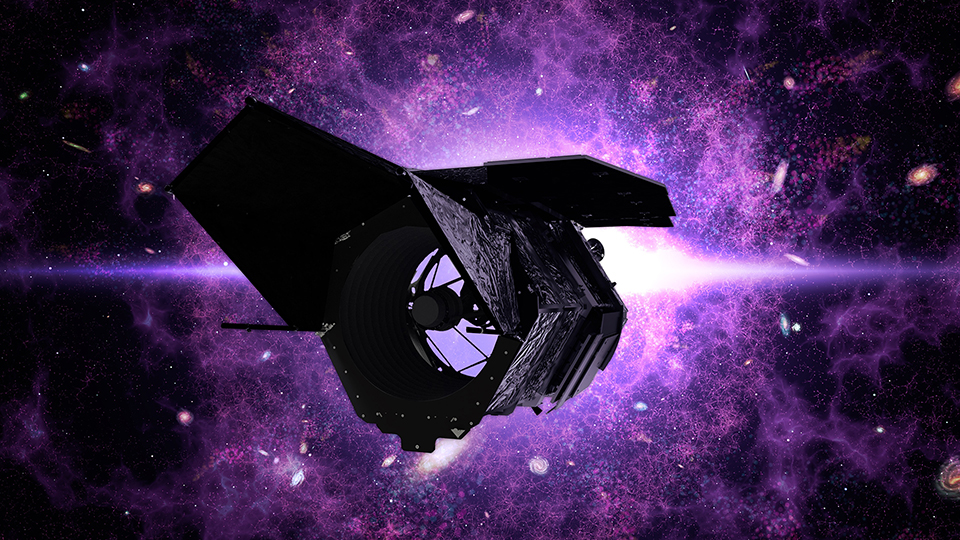Tsukuba Uchu Forum
148th Uchu Forum
Nancy Grace Roman 宇宙望遠鏡が拓く新たな宇宙像 Nancy Grace Roman Space Telecope: Challenge to Open New Vision of the Universe
Toru Yamada
Institute of Space and Astronautical Science, JAXA
Abstract
Nancy Grace Roman (*) 宇宙望遠鏡 (以下,Roman) の打上がいよいよ約2年後に迫ってきた。Roman は,James Webb 宇宙望遠鏡に続くNASAが主導する大型宇宙物理学ミッションで,口径2.4mの光学望遠鏡と 2.88億画素の広視野近赤外撮像・分光装置を持ち,ハッブル宇宙望遠鏡の約200倍の視野で,宇宙の加速膨張史の精密測定とダークエネルギーの性質の解明,宇宙の構造形成史の広範かつ精密な測定,太陽系外惑星の分布の全貌を把握する研究,そして,近赤外線広視野観測を活用する様々な天文学課題を遂行する。 また,Roman には,広視野での撮像分光を行う主装置 Wide Field Instrument に加えて,技術実証装置として,太陽系外惑星の直接観測のための宇宙用コロナグラフ装置が搭載される。これは将来の Habitable Worlds Observatory などによる地球類似惑星(太陽型の周囲のハビタブルゾーンを巡る地球型惑星)の直接観測のための必須かつ重要なステップと位置づけられている。現在,Roman は,2026年10月の打上を目指して,最終段階の開発が進められているところである。 Roman望遠鏡計画には,当初より JAXAを通じて日本の研究者が参加しており,Roman望遠鏡の科学計画の検討,装置開発,JAXA地上局にによる大規模観測データ受信運用への参加に加えて,非常にユニークでRomanと相補的な能力を持つ地上望遠鏡(国立天文台・すばる望遠鏡と大阪大学・PRIME望遠鏡)を用いた協調観測により貢献を行っている。本講演では,Nancy Grace Roman 宇宙望遠鏡がどのようなデータを得ようとするのか,そして,宇宙論・銀河の形成と進化・太陽系外惑星について,Roman が拓くと期待される新たな宇宙像について紹介し,併せてRoman 計画の現状,および日本の寄与の現状や科学協力についてもお話しする。Roman の観測時間の 75% を占めるサーベイ観測のデータは,観測後すみやかに全世界の研究者にオープンされ,また,25%は様々な共同利用課題を遂行する一般観測時間である。是非,多くの研究者の方に Roman データの活用を期待したい。 講演者はこれまで,すばる望遠鏡の広視野観測によって銀河の形成・進化についての研究を進めてきた。すばる望遠鏡による輝線銀河や星形成銀河の観測をさらに高赤方偏移へと発展させるため,また,星質量に基づく銀河観測や吸収を受けた赤い銀河の観測など可視光の広視野に対応する近赤外線データを取得するためには,Roman宇宙望遠鏡はまさにすばる広視野観測からの「必然の発展」を目指すものとも言えるだろう。このような観点から,とくに高赤方偏移の銀河分布構造と銀河形成領域に着目して,Romanへの期待についてもお話ししたい。 The launch of the Nancy Grace Roman (*) Space Telescope (hereafter referred to as "Roman") is now just about two years away. Roman is NASA's next major astrophysics mission following the James Webb Space Telescope. It features a 2.4-meter aperture optical telescope and a wide-field near-infrared imaging and spectroscopic instrument with 288-megapixel, offering a field of view approximately 200 times larger than the Hubble Space Telescope. Roman aims to conduct precise measurements of the accelerating expansion of the universe and to study the nature of dark energy, to perform comprehensive and detailed measurements of the history of cosmic structure formation, to survey the distribution of exoplanets, and to address various astronomical questions through wide-field near-infrared observations. Additionally, Roman will be equipped with Coronagraph Instrument for direct imaging of exoplanets, alongside its main instrument, the Wide Field Instrument. This coronagraph, as a technology demonstration, is considered an essential and important step toward future direct observations of Earth-like planets orbiting in the habitable zones of Sun-like stars, such as those that could be made by missions like the Habitable Worlds Observatory. Currently, Roman is in its final stages of development, targeting a launch in October 2026. Since the early phase, Japanese researchers have participated in the Roman telescope project through JAXA (Japan Aerospace Exploration Agency), contributing to the scientific planning, instrument development, and ground station operations, including the reception of large-scale observation data via JAXA ground stations. Additionally, they are contributing through coordinated synergistic observations using ground-based telescopes with unique and complementary capabilities, such as Subaru Telescope (NAOJ) and PRIME telescope (Osaka University). In this lecture, I will introduce the expected data that the Nancy Grace Roman Space Telescope aims to acquire, and discuss the new perspectives on the universe that Roman is expected to open up in the fields of cosmology, galaxy formation and evolution, and exoplanets. I will also touch on the current status of the Roman project, as well as Japan's contributions and scientific collaborations. The data obtained in the survey observations, which will occupy 75% of Roman's observation time, will be made publicly available to researchers worldwide soon after the observations are completed, while the remaining 25% of the time will be dedicated to general observation proposals for various guest research projects. I hope many researchers will make full use of the Roman data. The speaker has previously conducted research on galaxy formation and evolution through wide-field observations with the Subaru Telescope. In order to further extend such observations of emission-line galaxies and star-forming galaxies to higher redshifts, or to obtain near-infrared data that complement wide-field visible light observations, such as stellar-mass-based galaxy observations or red galaxies affected by absorption, the Roman Space Telescope represents a "natural progression" from the wide-field observations made by Subaru. From this perspective, I would also like to discuss what I expect for Roman, particularly with a focus on the large-scale structiore of high-redshift star-forming galaxies and 'galaxy formation regions'. (*) Footnote: The name Nancy Grace Roman refers to one of NASA's pioneering astronomers and the "mother" of the Hubble Space Telescope.


 和 英
和 英